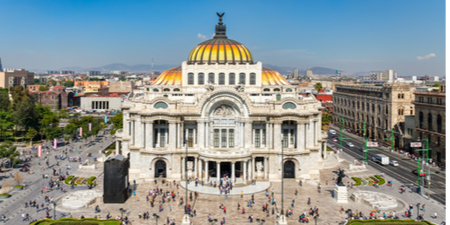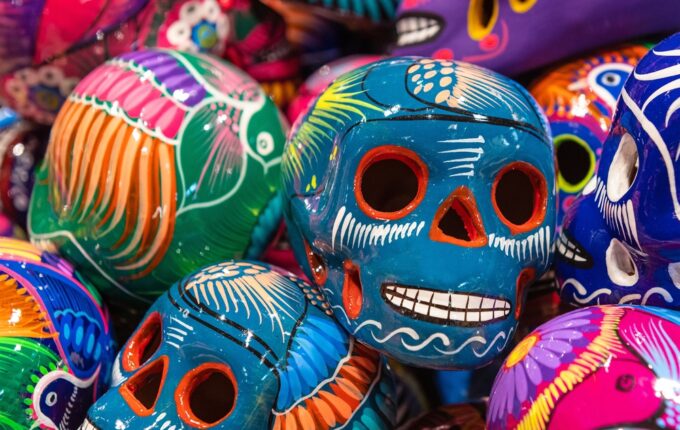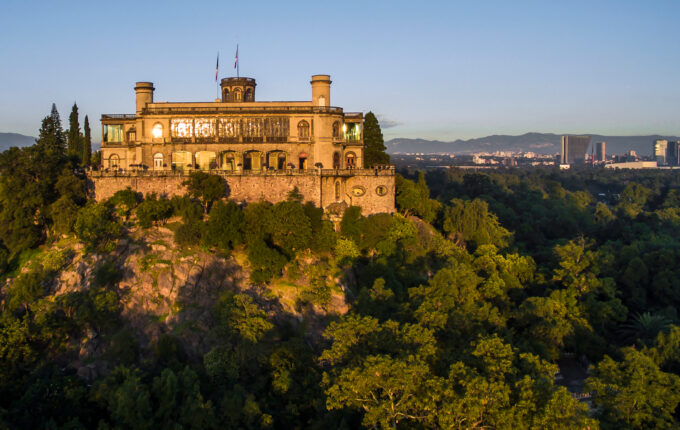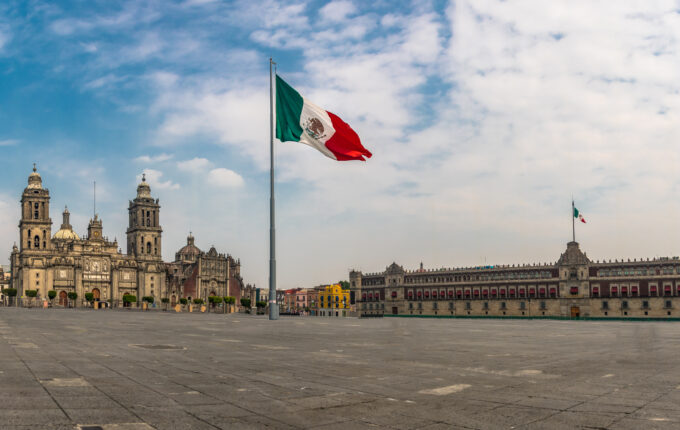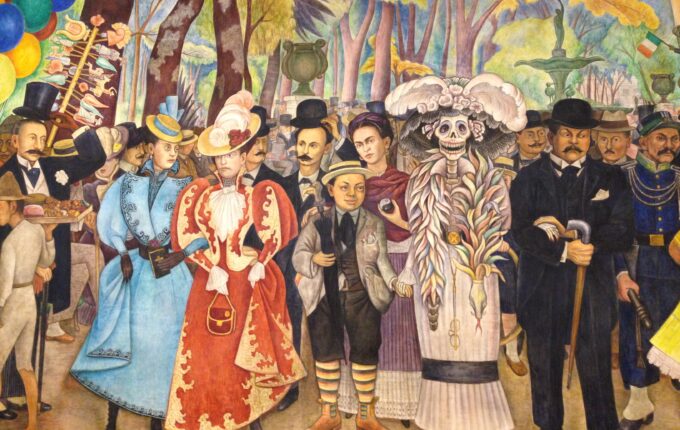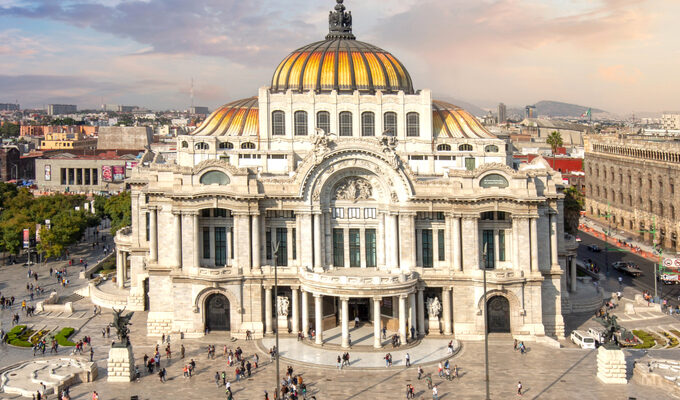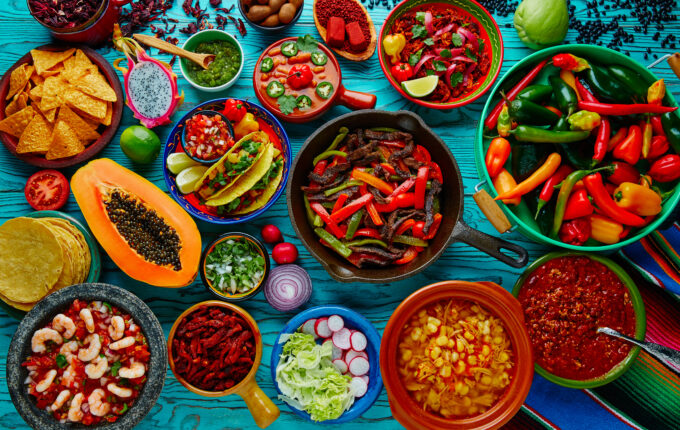March 16
D,R
- Depart on independent flights to Mexico City. Upon arrival independent transfers to the Sheraton Mexico City Maria Isabel Hotel, located in the heart of the exclusive Paseo de la Reforma.
- Late this afternoon attend an introductory lecture by Rodrigo Salas. Rodrigo graduated from the National School of Anthropology and will be your guide in Mexico City.
- Gather for a welcome dinner at Sonia's, located just off Paseo de la Reforma in the heart of the Juárez neighborhood. The cuisine is inspired by the flavors of Mexico and memories of family meals.
March 17
B,L,D
- Meet for a discussion focusing on the contemporary political landscape in Mexico, with a focus on the election of Claudia Sheinbaum, an environmental scientist and former mayor of Mexico City. Sheinbaum, who won the election in a landslide, assumed the presidency amid high expectations and enormous challenges, including endemic cartel violence, a large national deficit, and a complex relationship with the U.S..
- Leading the discussion will be Nicolás Medina Mora, a writer, teacher, and journalist. He has worked as a reporter for Reuters, where he covered financial markets, and BuzzFeed News, where he covered crime. His writing has appeared in The New York Times, The Nation, N+1, and Nexos.
- Head to Coyoacán to visit the birthplace and final residence of Frida Kahlo, now known as the Museo Casa Azul. Preserved in the home are the personal objects that reveal the private universe of Latin America’s most celebrated woman artist.
- Enjoy a lovely lunch outside at the wonderful Corazón de Maguey, located on Coyacan’s main plaza.
- After lunch drive to the home where Leon Trotsky lived – and was assassinated. The house has been preserved in detail: Trotsky’s bathrobe still hangs on the hook where he left it.
- Enjoy dinner this evening at Azulisimo, located in the city’s historic quarter. Chef Ricardo Muñoz Zurita has dedicated his life to Mexican food and is one of the country's most well-regarded chefs.
March 18
B,L
- Meet with Lynda Martinez del Campo, a cultural historian, writer and university professor who will talk about Mexican Muralism, a movement beginning in the early 1920s when the Mexican government commissioned artists to make art that would educate the mostly illiterate population about the country’s history and present a powerful vision of its future. The movement followed the Mexican Revolution. Inspired by the idealism of the Revolution, artists created epic, politically charged public murals that stressed Mexico’s pre-colonial history and culture and that depicted peasants, workers, and people of mixed Indian-European heritage as the heroes who would forge its future. José Clemente Orozco, Diego Rivera and David Alfaro Siqueiros were considered the leaders of Mexican Muralism.
- Depart the hotel to drive to the Museo de Arte Popular for a guided tour led by Fernanda Yáñez. This folk-art museum is a wonderful space to get acquainted with the diversity of Mexican craftmanship.
- Enjoy lunch at the simple, but wonderful, Martina Fonda Fina. The dishes change daily and are prepared with fresh, locally sourced ingredients.
- After lunch visit the offices of Miguel Agustin Pro Juarez Centre for Human Rights (Centro Prodh), a non-profit civil association working to promote structural changes in order to achieve human rights in Mexico. Since 1988 they have been working with excluded, vulnerable, and disenfranchised groups, including indigenous people, women, migrants, and victims of social repression.
- End the day at Polanco to enjoy a walking tour of some of the city’s street art. Leading the group will be Abril, part of the Street Art Chilango team. Street Art Chilango was founded by Street artists Jenaro de Rosenzweig and Alejandro Revilla in 2013 and supports local artists and businesses.
- Dinner this evening is at leisure.
March 19
B,L,D
- Drive to the city’s historical core where we will enjoy a walking tour of the city’s foundations and colonial past.
- Visit the Templo Mayor, an ancient Aztec site thought to be on the exact spot where the Aztecs saw their symbolic eagle perching on a cactus with a snake in its beak – the symbol of Mexico today. In Aztec belief this was, literally, the center of the universe.
- Stop at the Plaza de la Constitución, also known as Zocalo. This square was the center of Tenochtitlan before the arrival of the Spanish conquerors and today is one of the world’s largest city squares.
- Enjoy lunch in the courtyard of the mosaic clad Casa de Azulejos (House of Tiles).
- After lunch visit the Palacio de Bellas Artes. Construction of this iconic building began in 1905 by Italian architect Adamo Boari and was completed after the Mexican Revolution by architect Fredrico Mariscal utilizing the more modern art deco style which is still prominent today. Spend time viewing the immense murals by world-famous Mexican artists, such as, Rufino Tamayo and Diego Rivera.
- Walk through the lovely Alameda Central Park to the Museo Mural which is home to one of Diego Rivera’s most famous works - Sueño de Una Tarde Dominical en la Alameda Central (Dream of a Sunday Afternoon in the Alameda Central). This 45-foot-long mural was painted in 1947. Rivera imagined many of the figures who walked in the city from colonial times onward, among them Hernán Cortés, Benito Juárez, Porfirio Díaz and Francisco Madero. All are grouped around a Catrina (skeleton in pre-revolutionary women’s garb). Rivera himself, as a pug-faced child, and Frida Kahlo stand beside the skeleton.
- Dinner this evening is at leisure.
March 20
B,L,D
- Depart early for a visit to Teotihuacán, a large and majestic archaeological site located about 25 miles north of Mexico City. It is famous for its large pyramids dedicated to the sun and the moon, but the site also contains beautiful murals and carvings and several museums through which you can explore the city's fascinating history. This is one of the largest and most important archaeological sites in Mexico.
- Enjoy lunch at the site before visiting the Museo Nacional de Antropologia. Situated within the lush surroundings of Bosque de Chapultepec, the museum has a massive Mesoamerican artifact collection and today we will concentrate on the Aztec and Mayan halls, which contain world-famous pieces from Mexico's pre-Hispanic period.
- Enjoy some free time before a farewell dinner this evening.
March 21: Return Home
B
- Return home or enjoy a two day extension to Oaxaca.
March 21: Optional Extension to Oaxaca
B,L,D
- Take a morning flight to Oaxaca, a vibrant colonial city recognized as a UNESCO World Heritage Site with some of the richest and strongest traditions in Mexico.
- In Bartolo visit the Museo Estatal de Arte Popular Oaxaca (MEAPO), which exhibits crafts from all of Oaxaca’s 8 regions with a focus on the black pottery, the specialty of San Bartolo Coyotepec.
- Enjoy a local lunch at Restaurante Azucena located in San Martín Tilcajete.
- Continue on to a workshop near San Martín Tilcajete, where legions of artisans carved, whittled and painted wooden alebrijes (fancifully painted balsawood animals). These real and mythical animal figures represent spirits in Zapotec culture.
- Heading north towards Oaxaca visit the Convento de Cuilapam, where revolutionary Mexican independence leader General Vincente Guerrero who was shot dead by firing squad in 1831. The roofless convent is set in large peaceful grounds and houses a number of fresco paintings dating from the 16th century.
- Check-into the Parador San Miguel, a charming hotel located a few minutes away from the city’s main square the Zocolo. Traffic-free, shaded by tall trees and surrounded by elegant portales (arcades), the Zócalo is the perfect place to start soaking up the Oaxaca atmosphere. Dinner this evening is at leisure to explore the area.
March 22: Optional Extension to Oaxaca
B,L
- This morning a walking tour of Oaxaca. Founded by the Aztecs, Oaxaca became a Spanish outpost and remains a complex but intensely attractive city whose majestic churches and refined plazas have deservedly earned it a UNESCO World Heritage badge.
- Begin at the church of Santo Domingo with its swirl of gold gilt interior and priceless artifacts. Built in 1570 this is one of Oaxaca’s most splendid churches. Walk down Alcalá and stop in at two markets to try “tejate” a ceremonial drink hailing from the Sierra Norte region of Oaxaca. For the adventurous try a “chapuline” – a toasted, chili-spiced grasshopper.
- Continue on to the San Pablo cultural center. Located in an ex-16th Century Dominican Convent, the Center actively promotes the culture of Oaxaca through a wide range of concerts, lectures, workshops and other events.
- Lunch at Itanoní Antojeria y Tortilleria. This small snack bar come restaurant uses heirloom corn varieties to make extraordinary versions of very ordinary antojitos, those corn tortilla-based small dishes that are the heart of the Mexican menu. Though humble in appearance, what is going on behind the scenes is truly impressive, prompting no less than Alice Waters to declare it one of her favorite restaurants in the city.
- Joining us for lunch will be with Oliver Frohling, cofounder of SURCO, a center for autonomous education and local activism.
- Afterward, visit the village of Teotitlan del Valle to see the Vida Nueva Women’s weaving cooperative. Meet with the co-op founders, learn about their work, see how natural dyes are made, and attend a weaving demonstration.
- On the way back to Oaxaca stop at a mezcal distillery for a tasting.
- This evening enjoy a farewell dinner.
March 23: Optional Extension
B,L
- Morning drive to Monte Albán for a guided tour of the most significant archeological site in the Oaxaca Valley, and a UNESCO World Heritage Site.
- After lunch you will be dropped off at the airport for mid-afternoon flights home.
-
Please let us know if you would like to extend your time in Oaxaca.
Trip Price
Per person double occupancy: $4,950 Main Program / $1,830 Oaxaca Extension
Single supplement: $1,050 Main Program / $680 Oaxaca Extension
Included
Main tour and extension
- Accommodation, based on double occupancy, in hotels as listed
- Meals as listed in the itinerary with bottled water
- Bottled water on the bus
- All sightseeing and excursions as listed with all entrance fees in a private air-conditioned bus
- Transportation in a deluxe bus with air-conditioning
- Services of an English-speaking local guide/tour manager who will travel with the group
- All gratuities
- Welcome and farewell receptions
Not Included
Main tour and extension
- Airfare to/from Mexico City (main program) and from Oaxaca (extension)
- One-way group air from Oaxaca to Mexico City ($280 - booked by tour operator)
- Airport transfers in Mexico City
- Luggage charges
- Drinks at included lunches and dinners, except for welcome and farewell receptions
- Passport fees
- Travel insurance
- Items of a purely personal nature
- Any item not listed
Scheduled events, speakers and their timing are subject to change based on availability.

